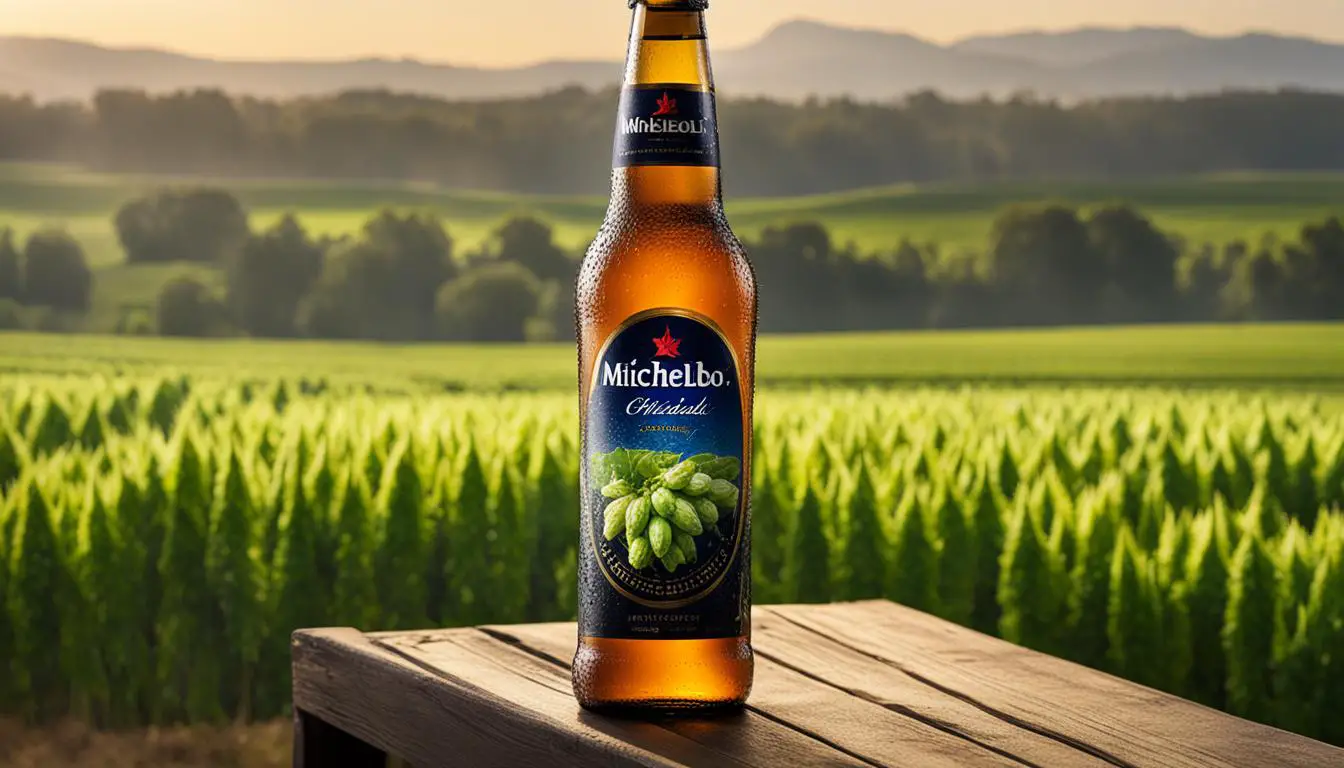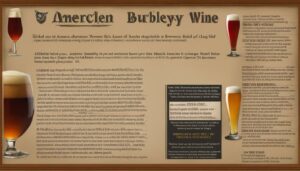Originally posted on December 12, 2023 @ 6:09 pm
Recently, there has been a buzz in the beer community about a potential recipe change for Michelob, one of the well-known beer brands. Beer enthusiasts and loyal fans of Michelob are wondering if their favorite brew has experienced a transformation in its recipe. Let’s dive deeper into this topic and find out what changes, if any, have been made to the iconic Michelob beer.
Contents
- 1 The History of Michelob’s Recipe
- 2 The Reasons for the Recipe Change
- 3 The Return of the Teardrop Bottles
- 4 The Role of Glassware in the Beer Drinking Experience
- 5 The Response to the Recipe Change
- 6 The Impact of the Craft Beer Movement
- 7 The Future of Michelob Beer
- 8 The Importance of Historical Brewing Methods
- 9 Conclusion
- 10 FAQ
- 10.1 Did Michelob recently change its recipe?
- 10.2 Why did Michelob change its recipe?
- 10.3 What was the original recipe of Michelob beer?
- 10.4 When was the recipe of Michelob beer changed?
- 10.5 What is the new recipe of Michelob beer?
- 10.6 Are teardrop bottles being reintroduced for Michelob beer?
- 10.7 How does glassware impact the beer drinking experience?
- 10.8 How have consumers responded to the recipe change?
- 10.9 What impact has the craft beer movement had on Michelob?
- 10.10 What does the future hold for Michelob beer?
- 11 Source Links
Key Takeaways:
- Anheuser-Busch has made changes to the recipe of Michelob beer, reverting back to an all-malt formula.
- The new recipe aims to reflect the rich toasted maltiness, balanced hop profile, and smooth velvety finish that Michelob is known for.
- The decision to change the recipe came in response to declining sales of the Michelob brand.
- The reintroduction of the all-malt recipe is accompanied by the return of the iconic teardrop bottles.
- The success of the recipe change will depend on consumer reception and the ability to captivate beer enthusiasts.
The History of Michelob’s Recipe
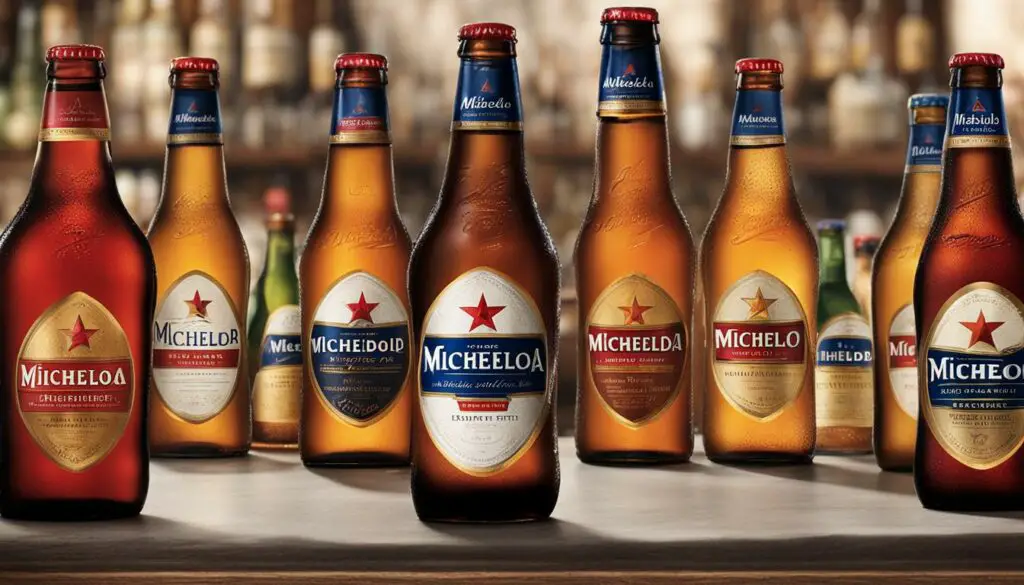
Michelob beer has a long and storied history that dates back to its introduction in 1896. Originally brewed with 100% malt, it quickly gained a reputation for its rich flavor and quality craftsmanship. However, in 1961, Anheuser-Busch made a significant change to the recipe by incorporating rice into the brewing process. This alteration was made in an effort to lighten the taste and appeal to a wider audience.
For over six decades, the use of rice in the Michelob recipe deviated from the traditional all-malt brewing process. While it succeeded in making the beer more approachable and drinkable, it also sparked debate among purists who longed for the original flavor profile. Recently, the Michelob brand has faced declining sales, prompting Anheuser-Busch to reassess its recipe and return to its roots.
With the recent recipe change, Michelob has reverted to using an all-malt formula, embracing its heritage and bringing back the rich flavors that made it famous. The updated brewing process aims to capture the essence of the original Michelob beer, characterized by a robust toasted maltiness, a balanced hop profile, a deep color, and a smooth velvety finish.
By going back to its traditional recipe, Anheuser-Busch hopes to reconnect with beer connoisseurs and rekindle their love for Michelob. The shift in recipe reflects the brand’s commitment to quality and its willingness to adapt to the changing preferences of consumers.
Take a moment to appreciate the history and evolution of Michelob with this image of its iconic teardrop bottles:
The Reasons for the Recipe Change
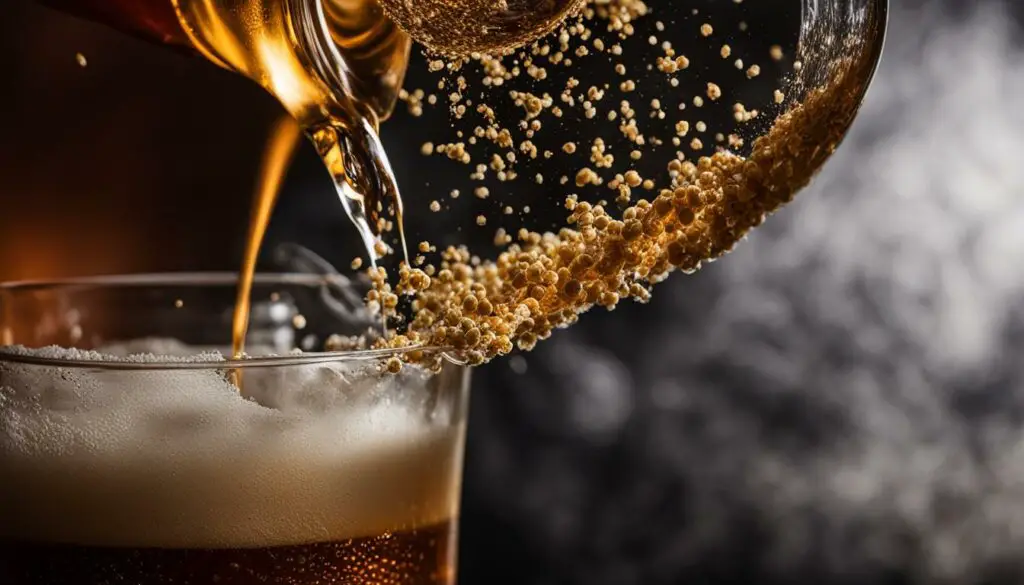
The decision to change the recipe of Michelob beer was driven by the declining sales of the brand. Michelob Light saw a 9.8% drop in sales from 2005 to 2006, while Michelob Lager experienced a 16.3% decrease in sales during the same period. The reintroduction of an all-malt recipe is expected to appeal to beer connoisseurs and bring back the rich toasted maltiness and balanced hop profile that characterize Michelob beer. Additionally, the change in recipe is accompanied by a return to the iconic teardrop bottles that were previously used for the brand.
The Return of the Teardrop Bottles
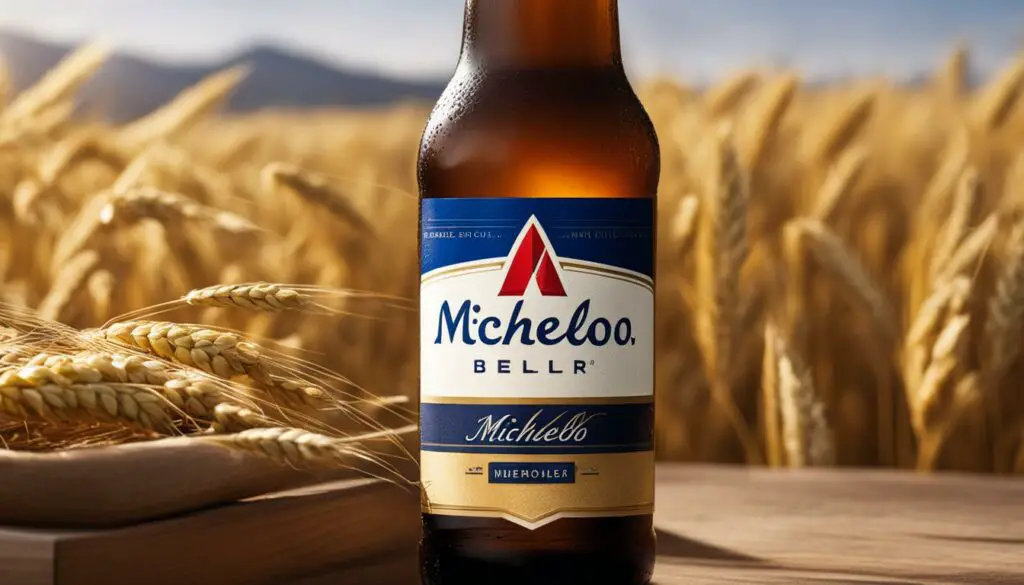
Along with the recipe change, Anheuser-Busch is bringing back the iconic teardrop bottles for Michelob and Michelob Light. These amber bottles were originally introduced in 1961 when the recipe of Michelob was altered to include rice. The teardrop bottles were intended to make the beer easily recognizable in bars and restaurants. However, in 2002, the bottles were replaced with a more modern design. The return of the teardrop bottles is aimed at reconnecting with the brand’s rich brewing history and creating a sense of nostalgia for consumers.
| Teardrop Bottles | Modern Design Bottles |
|---|---|
| Originally introduced in 1961 | Introduced in 2002 |
| Easily recognizable in bars and restaurants | Contemporary design |
| Iconic and nostalgic | Modern and sleek |
The Role of Glassware in the Beer Drinking Experience

While the recipe change and the reintroduction of teardrop bottles are significant, Anheuser-Busch is also focusing on enhancing the beer drinking experience with the use of special glassware. The Boston Beer Co. recently unveiled a double-curved glass for its Samuel Adams beer, designed to fully showcase the complex balance of malt and hop flavors. Anheuser-Busch might consider exploring similar glassware options to elevate the sensory experience and highlight the flavor profile of the new all-malt Michelob beer.
The choice of glassware plays a vital role in enhancing the aroma, appearance, and overall enjoyment of beer. Different types of glassware are designed to accentuate specific beer styles and bring out the best in their flavors. By choosing the right glassware, beer enthusiasts can optimize their drinking experience and fully appreciate the nuances of each brew.
One example of specialized glassware is the tulip glass, which features a flared rim to capture and enhance the aroma of aromatic beers like IPAs and Belgian ales. The narrow waist of the glass helps to focus the aromas towards the nose, allowing the drinker to fully experience the beer’s complex scent.
Similarly, the shape of the glass can impact the way carbonation is released, affecting the beer’s mouthfeel and overall taste. For instance, a narrow, tapered glass, such as a pilsner glass, can help preserve the carbonation in highly-carbonated beers and maintain a crisp, refreshing quality.
The use of specialized glassware for the new all-malt Michelob beer can enhance the drinking experience by accentuating its rich toasted maltiness and balanced hop profile. Anheuser-Busch might consider collaborating with glass manufacturers to create a unique glassware design specifically tailored to amplify the distinctive flavors and aromas of Michelob beer.
Furthermore, the use of visually appealing glassware can also contribute to the overall enjoyment of the beer. The presentation of beer in an elegantly designed glass can elevate the experience, making it feel more special and indulgent.
In conclusion, the choice of glassware is an important consideration when it comes to enjoying beer. Anheuser-Busch’s focus on enhancing the beer drinking experience through the use of specialized glassware for the new all-malt Michelob beer showcases their commitment to delivering a sensory experience that highlights the flavor profile of the beer.
| Glassware Type | Best Beer Styles |
|---|---|
| Tulip Glass | IPAs, Belgian Ales |
| Pilsner Glass | Pilsners, Light Lagers |
| Snifter Glass | Stouts, Porters, Barrel-aged Beers |
| Weizen Glass | Hefeweizens, Wheat Beers |
The Response to the Recipe Change
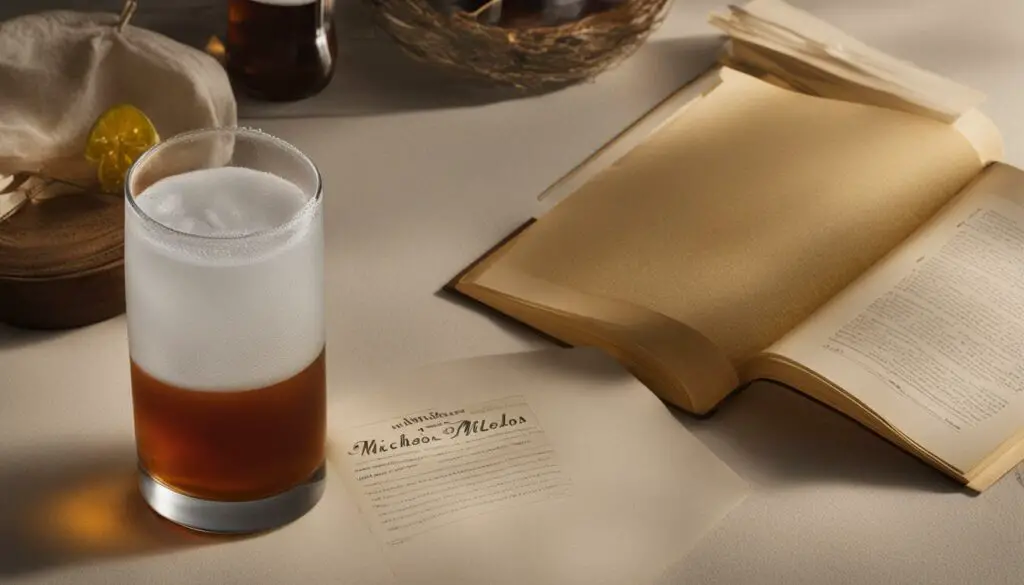
The response to the recipe change for Michelob beer has been mixed. Some beer enthusiasts appreciate the return to an all-malt formula and expect the new recipe to deliver a more intense taste experience. Others, however, have expressed nostalgia for the rice-infused version of Michelob and question the need for the change. Ultimately, consumer preferences will determine the success of the new recipe, and it remains to be seen whether the all-malt formula will resonate with beer drinkers and help revitalize the Michelob brand.
The Impact of the Craft Beer Movement

The craft beer movement has had a significant impact on the beer industry, challenging traditional brewing methods and introducing a wide range of flavors and styles. As consumer tastes have shifted towards craft beers, mainstream brands like Michelob have faced increased competition. The recipe change for Michelob can be seen as a response to this changing landscape and an attempt to appeal to beer enthusiasts who seek more flavorful and distinctive options. By offering a richer taste experience, Michelob hopes to regain its position in the market.
The craft beer movement has revolutionized the beer industry, with small independent breweries gaining popularity among beer enthusiasts. These breweries prioritize quality, creativity, and craftsmanship, often experimenting with unique ingredients and brewing techniques to create innovative and flavorful beers. This shift in consumer preferences has posed a challenge for traditional mainstream brands like Michelob, which may be seen as lacking in variety and depth of flavor.
Recognizing the importance of adapting to changing consumer demands, Michelob has decided to modify its recipe. By reintroducing an all-malt formula, the brand aims to align itself with the craft beer movement and attract beer connoisseurs who appreciate complex flavors and a rich brewing tradition. The new recipe promises a taste experience that embraces the heritage of Michelob while incorporating elements that resonate with modern beer enthusiasts.
With this recipe modification, Michelob aims to position itself as a brand that offers both the familiarity of a well-established beer and the excitement of the craft beer movement. By capitalizing on the growing interest in unique and flavorful beers, Michelob hopes to regain its prominence in the market and win over consumers who are seeking a more elevated and satisfying beer-drinking experience.
| Traditional Mainstream Beers | Craft Beers | |
|---|---|---|
| Flavor | Often characterized by a lighter and less complex flavor profile | Known for their bold and diverse flavors, with an emphasis on unique ingredients and brewing techniques |
| Variety | Limited range of styles and flavors | Wide variety of styles and flavors, allowing for greater customization and experimentation |
| Ingredients | Standard ingredients and brewing processes | Unconventional ingredients and brewing processes, often sourced locally and sustainably |
| Appeal | Targets a broad consumer base seeking a familiar and approachable beer | Attracts beer enthusiasts looking for unique and distinctive flavor experiences |
The Future of Michelob Beer
The recent recipe change for Michelob beer marks a significant shift for the brand and has the potential to shape its future. By returning to an all-malt formula, Michelob aims to reestablish itself as a beer for connoisseurs and differentiate itself from other mainstream options.
The success of this transformation hinges on the reception from consumers and the ability to capture the attention of beer enthusiasts. Anheuser-Busch will closely monitor sales and consumer feedback to determine the long-term viability of the new recipe and shape the future direction of Michelob.
The strategic decision to alter the recipe reflects Michelob’s commitment to meeting the evolving tastes of its consumers and keeping up with the changing dynamics of the beer industry. By adapting to consumer preferences and trends, Michelob aims to remain relevant in a competitive market.
The Importance of Historical Brewing Methods
The decision to reintroduce an all-malt recipe for Michelob beer reflects the importance of historical brewing methods and the desire to honor the brand’s rich heritage. By returning to the traditional brewing process, Anheuser-Busch hopes to capture the essence of the original Michelob beer and tap into the nostalgia associated with the brand. This commitment to traditional brewing techniques aligns with the broader craft beer movement, which emphasizes the use of high-quality ingredients and meticulous brewing processes to create unique and flavorful beers.
Conclusion
The recent recipe change for Michelob beer has generated significant discussion and debate among passionate beer enthusiasts. While some eagerly embrace the return to an all-malt formula, others express a sense of nostalgia for the rice-infused version of Michelob. The decision to alter the brewing recipe reflects the industry’s need to adapt to changing consumer preferences and strive for uniqueness and flavor.
It remains to be seen how consumers will respond to the new recipe and whether it will aid Michelob in reclaiming its position in the market. As the beer industry continues to evolve, brands must remain agile and responsive, catering to and satiating the desires of their target audience. Additionally, they must acquaint themselves with the ever-changing dynamic of consumer preferences.
Overall, Michelob’s recent recipe modification epitomizes the brand’s commitment to innovation while honoring its rich brewing history. Only time will reveal the extent to which this change will resonate with beer lovers and help Michelob recapture its distinct niche in the market.
FAQ
Did Michelob recently change its recipe?
Yes, Anheuser-Busch recently made changes to the recipe of Michelob beer, reverting to an all-malt formula.
Why did Michelob change its recipe?
The recipe change was made in response to declining sales of the Michelob brand.
What was the original recipe of Michelob beer?
Michelob beer was originally brewed with 100% malt when it was introduced in 1896.
When was the recipe of Michelob beer changed?
In 1961, Anheuser-Busch changed the recipe of Michelob beer by adding rice to lighten the taste.
What is the new recipe of Michelob beer?
The new recipe aims to reflect the basic style that Michelob is known for, with a rich toasted maltiness, balanced hop profile, rich color, and a smooth velvety finish.
Are teardrop bottles being reintroduced for Michelob beer?
Yes, as part of the recipe change, the iconic teardrop bottles are being reintroduced for Michelob and Michelob Light.
How does glassware impact the beer drinking experience?
Special glassware can enhance the sensory experience and highlight the flavor profile of the new all-malt Michelob beer.
How have consumers responded to the recipe change?
Consumer responses have been mixed, with some appreciating the return to an all-malt formula and others expressing nostalgia for the rice-infused version of Michelob.
What impact has the craft beer movement had on Michelob?
The craft beer movement has posed increased competition for mainstream brands like Michelob, leading to the recipe change to appeal to beer enthusiasts.
What does the future hold for Michelob beer?
The recipe change and reintroduction of the teardrop bottles reflect a shift in the brand’s direction, aiming to regain its position in the market and appeal to connoisseurs.

